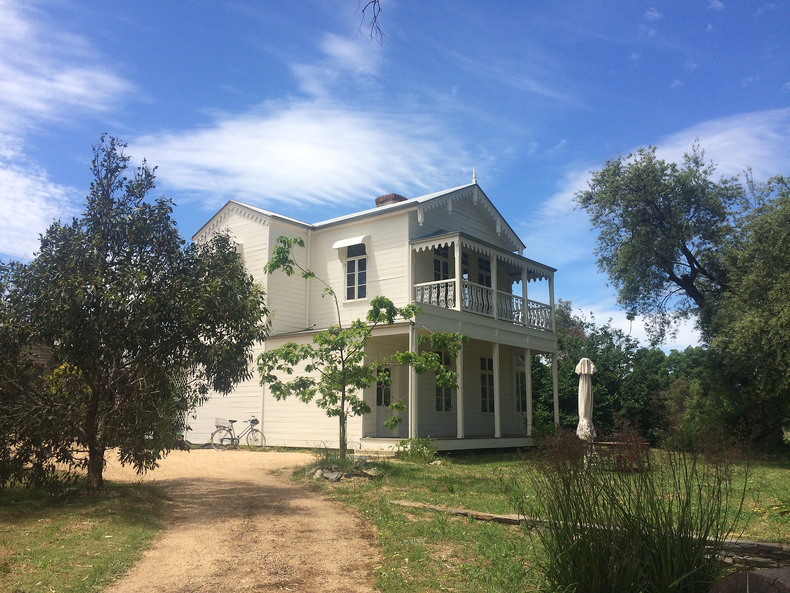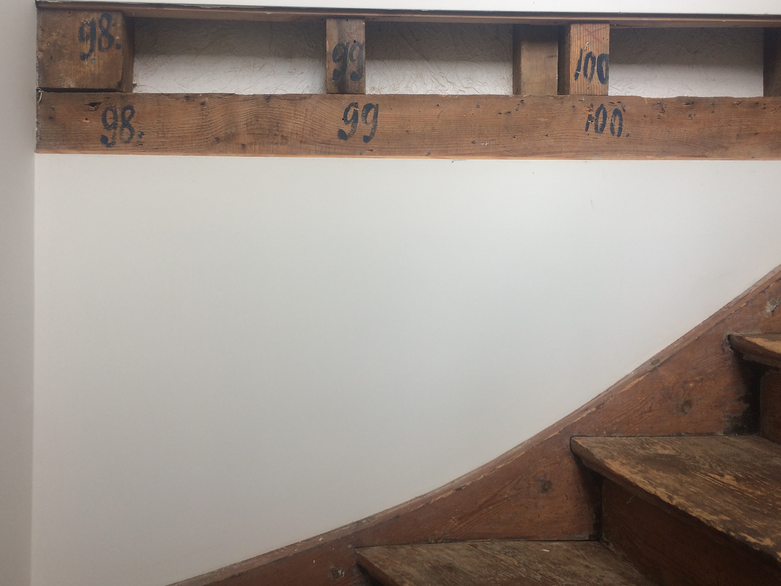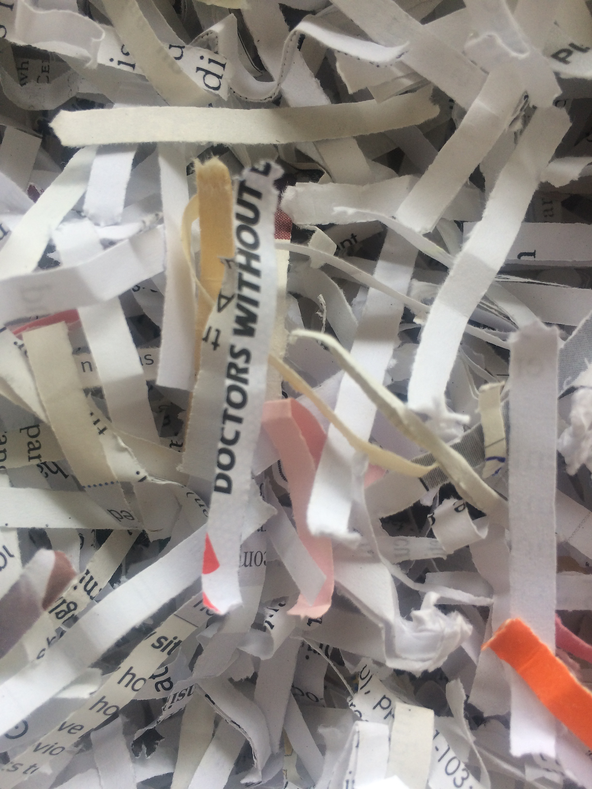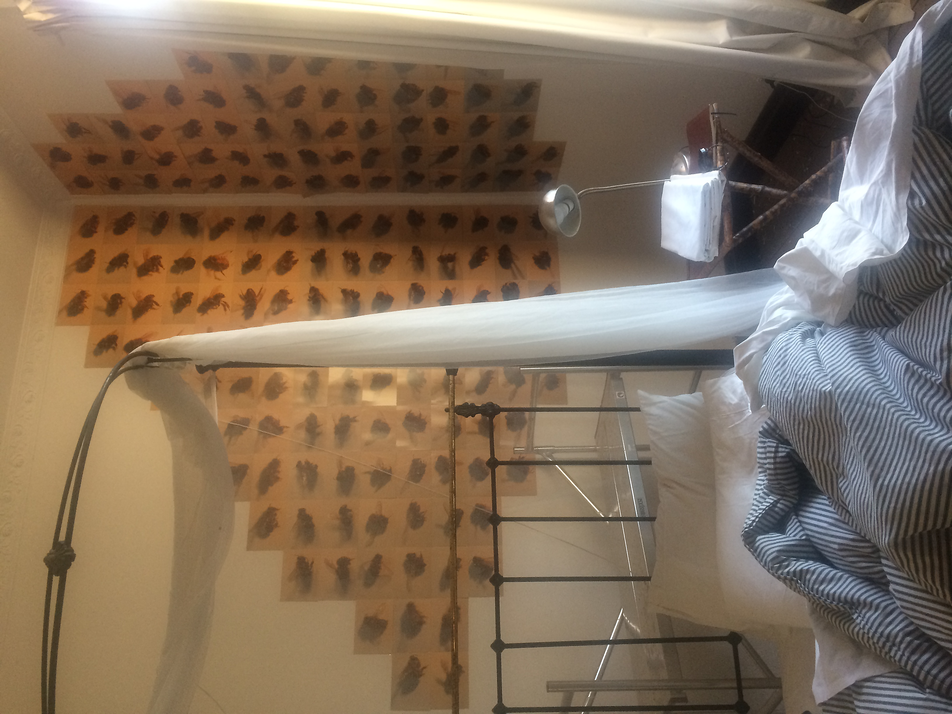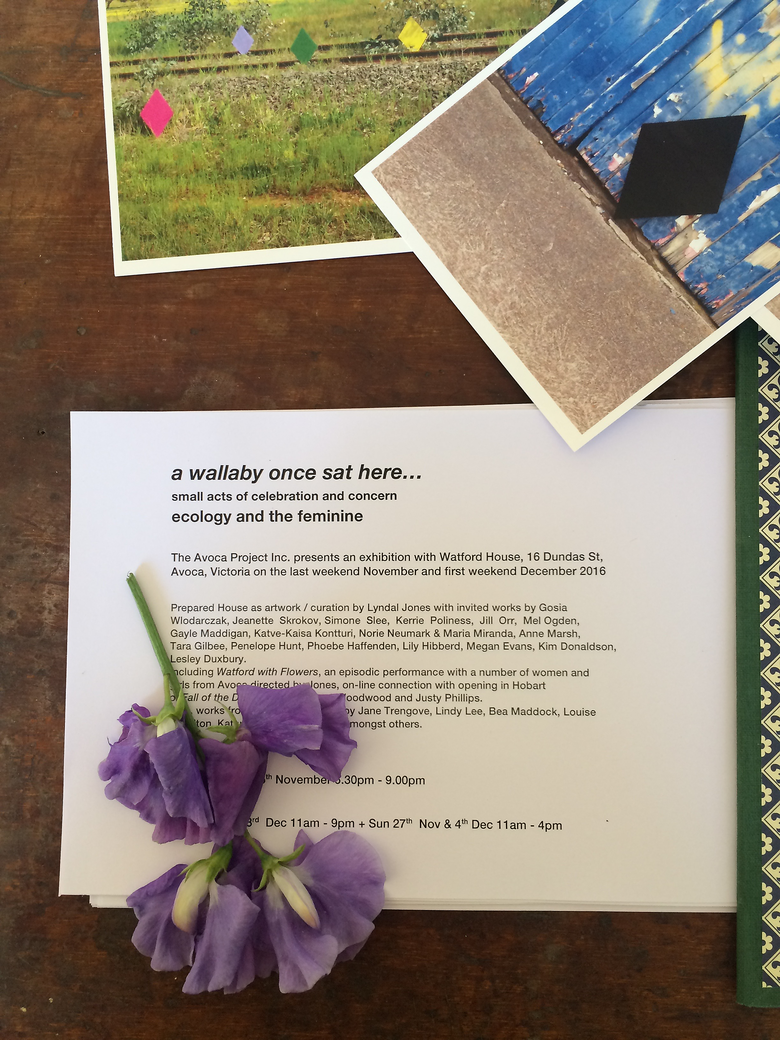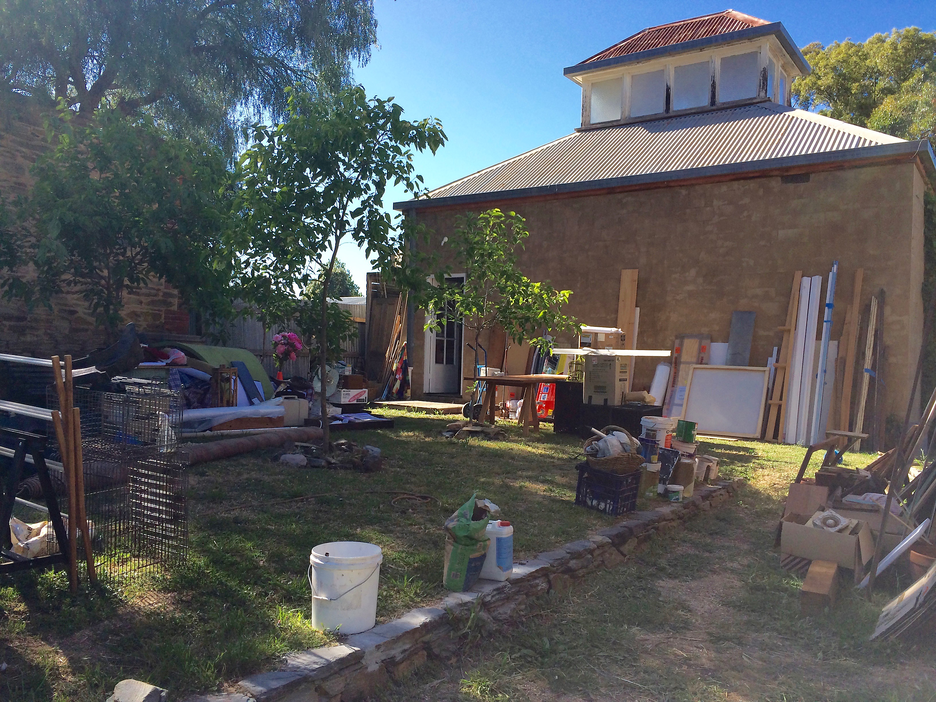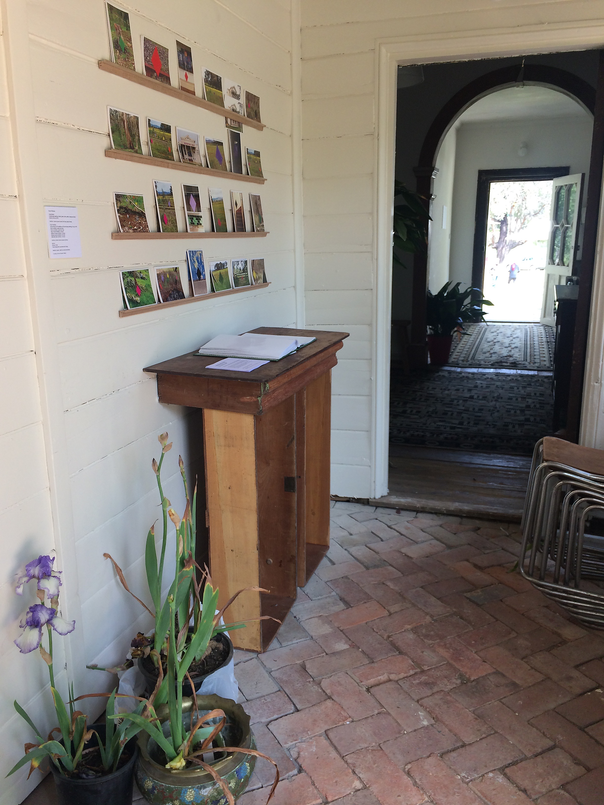Be(com)ing there, with the house transforming into an exhibition provided a hands-on experience in which artworks were not objects to be observed and then written about. Instead, they were palpable, participatory processes with which to write, think and feel. To write with is a tactic associated with approaches that appreciate the sensuous materiality of the processes central to new materialisms (Tiainen, Kontturi, Hongisto 2015, Kontturi 2012, see also Meskimmon 2011, Meskimmon and Sawdon 2016). To write with is to avoid the objectification of art and also to see and sense it as a process not reduced to a mere meaning. It is to appreciate the process of becoming, the material, spatial and temporal aspects of being, and to participate with this process by means of language: words, rhythm, and syntax.
This intra-active relation entails responsibility. In Karen Barad’s thinking, responsibility is not something that an individual chooses to perform; it is not a social or moral obligation towards a clearly defined object. Indeed, Barad claims that responsibility precedes intentionality. Here responsibility is an embodied, material relation “always already integral to the world’s ongoing, intra-active becoming” (Barad 2012, 81). In other words, “responsibility is an enabling responsiveness” and as such something inherently productive:
This section constitutes an exposé of a writing experiment in which a textual work of art was created in the space where an art exhibition was in the making. The exhibition, A wallaby once sat here… small acts of celebration and concern: ecology and the feminine (2016), was curated in the small country town of Avoca by renowned Australian artist Lyndal Jones, and included works and performances of almost 20 women artists and groups, only a couple of which are attended to here. As one of the artists, Jones had invited art historian and writer Katve-Kaisa Kontturi to stay at the exhibition venue while the exhibition was prepared. This was in keeping with the idea the curator had about the relationship of the exhibition to the house where it was to be held. Jones wanted to give the house more than the passive role of being a 'stage' for the exhibition: she insisted that the exhibition would happen with the house. In other words, the exhibition would become in the processes of intra-action with the venue and the natural environment surrounding it. Similarly, Kontturi’s text would take form in relation to the emerging exhibition. This section contains excerpts of the wall text created for the curated exhibition, with much of that text emerging in intra-active presence at the house during installation and thus as an artwork in itself. As such, the text is entangled within the argument in the making that this text (which you are now reading) moves to establish. Participating in its emergence, and becoming more-than a exhibition text, this text arises as something between the practices of exhibition-making and of theorizing intra-active becoming.
Lyndal Jones ran the international Avoca project: Art, Place, Climate Change, for a decade, between 2006–2016 in Avoca, a small town situated in rural Victoria and two hours northwest of Melbourne. The project centred on Watford House, a two story wooden building shipped from Hamburg to Australia in numbered planks in 1852, and known to locals as the Swiss house – a designation that refers to the house’s pittoresque style of European origin. This house, which had witnessed the wealth of the Gold Rush era, was in poor condition when Jones purchased it: it had suffered from the flooding of the nearby river and general neglect enhanced by harsh weather conditions. The project was to make the house flourish again by bringing together a variety of artists, philosophers and environmental specialists to work with locals, and with the house. In the past decade numerous residences, performances, symposia, and events emerged with the house and its surroundings – the river, the scorching, glaring sun, and the bright blue mountain sky – most recently the focus of this exposition, the exhibition A wallaby once sat here… small acts of celebration and concern: ecology and the feminine. Here the house is not a container for the exhibition but an inviting, open companion.
[T]his is an exhibition
with a permeable house
that does not obey
the conventions of
inside and outside.
With a house that insistently moves
on the nature–culture continuum.
Prepared not to resist floods,
but to let them through.
There are no screens
on the windows
no poison is used.
But bees buzzing in the walls,
cobwebs on the corners,
a random beetle
flying around.
In this experiment, the writer intra-acted with the house to find a connection to the works that came to the house, that became with the house. She did not visit the artists’ studios as writers often do, she did not follow the emergence of the work preceding the exhibition as she had done before (Kontturi 2014), but met art only with the house, where it was that these ostensibly separate, individual pieces became an exhibition.
To visit that process, to open it to others, to make its happening felt, a change of tense is needed. In the following, what happened is happening now:
With Maria Miranda and Norie Neumark, she travels to Avoca with a trunkload of huge black plastic bags filled with shredded paper, all while talking about the vicissitudes of neoliberal university, of depression and of aging, sick parents.
With the house, she polishes the leaves of the plastic palms, wipes them shiny with olive oil, and drags them to the conservatory, where the shredded paper is spread so that it fills a windowed conservatory to the waist.
There she plants the palms.
She sees and documents the artists throwing shredded paper with the joyful pleasure of letting go.
She wit(h)nesses, as Bracha Ettinger(2006) says, the shreds finding their way everywhere, spreading beyond the conservatory, to the dining room and the lounge, and leaking into the yard.
In the process, she finds unexpected treasures amongst the millions of pieces of shredded lectures – the remains of a long teaching career now in the past – and other, isolated meanings emerged out of the pile: the "doctors without"…
A year of shredding:
Shredded forty years lectures.
Shredded selves made redundant:
‘doctors without’…
The shredded aesthetics of neoliberalism.
A year of shredding
Making quiet noise, real noise, vaudeville like.
Comically critiquing Capitalism:
to get under its skin.
Attending
the physicality
of the space
Finding the right place,
not resemblance,
but an enabling relation,
a vibrating connection,
where the house and the work
both become something more.
Not to pin, not to fasten for good.
Not the bees. Not the shred.
Not the country.
Instead,
let them express themselves,
their vital, mutual
entanglements.
Watford house is no ordinary artist’s residence. It eschews the conventions of being a place that you visit once, get your requisite inspiration from, and where you work and focus in isolation from the ‘everyday’. Instead, the idea behind this residence as a place of art has always been to create an active ongoing relationship between the house and the area, and to return to the house, experiencing with it again and again. All the artists invited to exhibit with the house during the Wallaby once sat there exhibition have had previous encounters with it, and so had Kontturi as an artist-writer: she is part of an international SenseLab artist-philosopher collective that participated in the Avoca project in 2014, and had witnessed multiple art experiments emerging with the house before taking on this particular assignment. It would have been hard the compose the above lines without a lived experience with the house in the process of transforming into an exhibition. However, this writing experience was not just about being in the present moment. This is something that Karen Barad addresses when she writes that “presence is not a matter of a thin slice of now, but rather the hauntology of inheritance, inheriting the future as well as the past” (Barad 2012, 81). Attendance to the the present necessarily includes what was there a while ago and what will be too. It is about relating, opening oneself in relationship to a process that is of a material, spatial and temporal kind.
In order to write her piece, Kontturi spent a lot of time at the house, with the house, artworks and artists, during the two weeks preceding the exhibition in November of 2016. She did not just observe, she worked and slept in the exhibition in the making: she became part (of the action) of the house turning into an exhibition. The writer did not stay in her upstairs room, but intra-acted with the emerging exhibition, taking part in preparing the house, helping with the installation, getting her hands and dress dirty and dusty…
Dusting, wiping, washing
With sugar soap, olive oil
Rolling carpets,
rinsing sand,
polishing plastic leaves,
carrying the palm trees,
furniture, crockery, books,
and magazines.
Upstairs, downstairs, in and out
Between the house and it extensions
conservatory, garden, shed, yard, and studio
Domestic chores
to extend the domestic:
To make room for artful encounters
To enable an exhibition.
An exhibition that is
not about the house
but emerging
with it.
In an upstairs bedroom, with Megan Evans, she cuts dozens of tiny stickers in half, carefully places them on the back of photographic portraits of dead bees, and hands them over to the artist, who installs them side by side, building a pictorial beehive extending to the two walls. A chair on top of a scaffold is needed to install the topmost rows, for bodies and arms to reach the furthermost corners. Next to the emerging papery beehive is a Victorian black and gold iron bed, elegantly draped in chiffon and linen. There the writer sleeps her nights and naps during the day, when the making of the exhibition becomes too intensive. It is on that bed next to the bees, with the bees in fact, that she drafts the text, writes significant parts of it. Working extensive hours with the bees, and being so close to the wall, they, she, hear them buzzing in the wall cavity, and thus she learns the lesson of….
appreciating the beauty and work of bees
Bees that feed us, pollinating, making possible what we eat,
killed by a colony collapse, commercial greed, climate change.
A shadowy funeral of furry bodies,
rainbow fairy wings.
All singular; none the same:
‘no two bees or pictures alike.’
Listen to the walls
The bees are still there,
doing their work.
